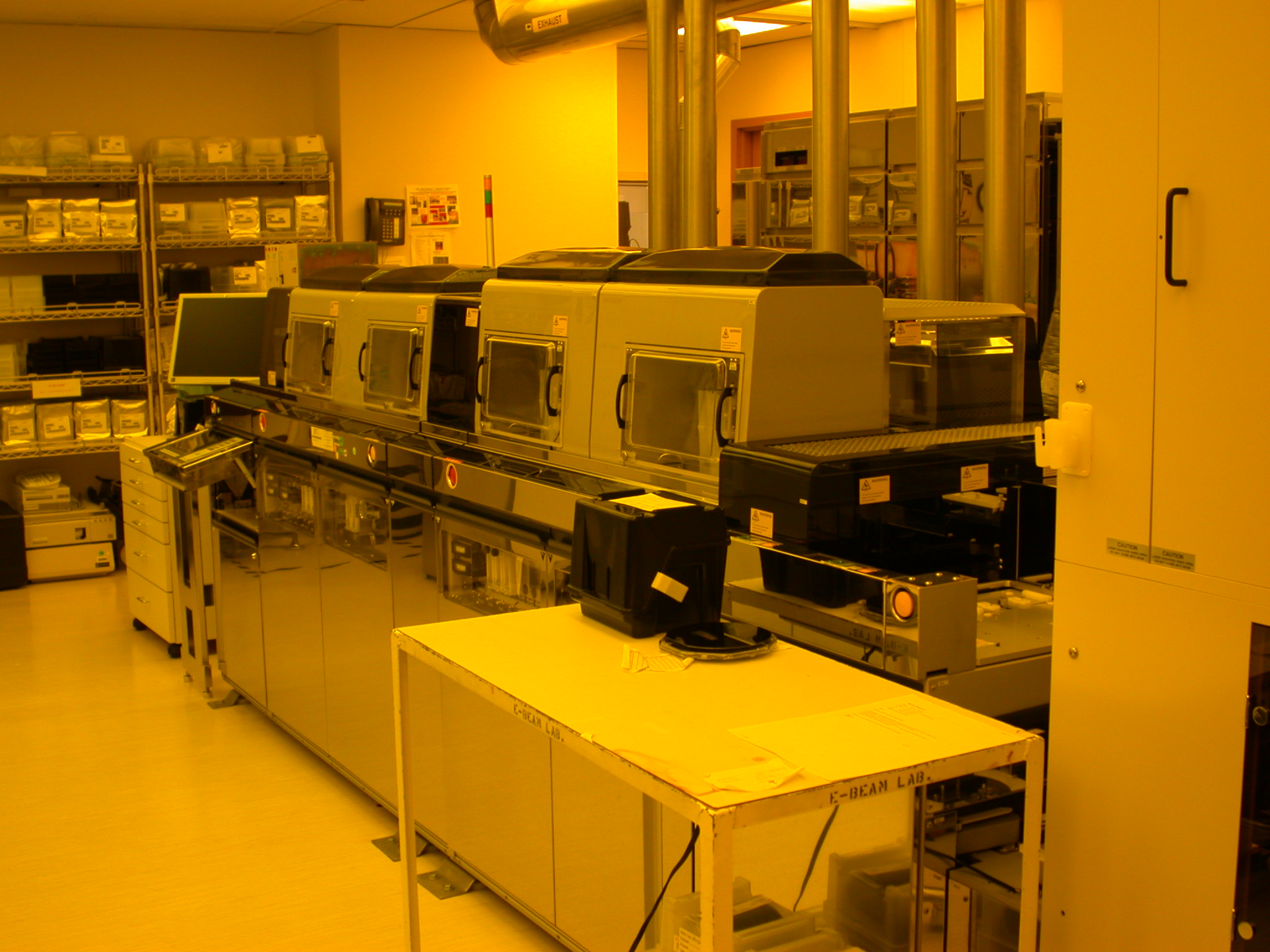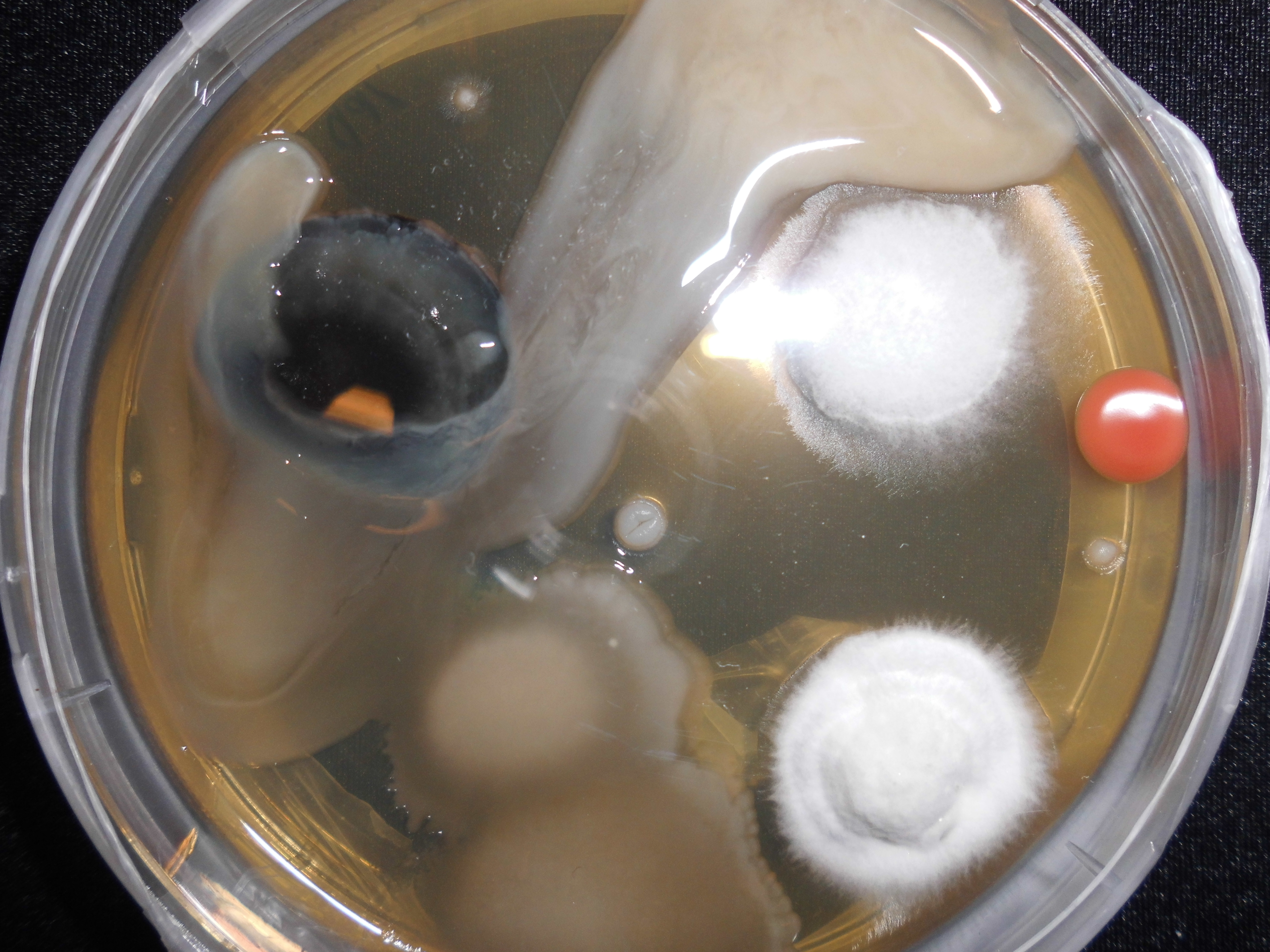|
Cleanroom
A cleanroom or clean room is an engineered space that maintains a very low concentration of airborne particulates. It is well-isolated, well-controlled from contamination, and actively cleansed. Such rooms are commonly needed for scientific research and in industrial production for all nanoscale processes, such as semiconductor device manufacturing. A cleanroom is designed to keep everything from dust to airborne organisms or vaporised particles away from it, and so from whatever material is being handled inside it. A cleanroom can also prevent the escape of materials. This is often the primary aim in hazardous biology, nuclear work, pharmaceutics, and virology. Cleanrooms typically come with a cleanliness level quantified by the number of particles per cubic meter at a predetermined molecule measure. The ambient outdoor air in a typical urban area contains 35,000,000 particles for each cubic meter in the size range 0.5 μm and bigger, equivalent to an ISO 9 certified c ... [...More Info...] [...Related Items...] OR: [Wikipedia] [Google] [Baidu] |
ISO 14644
ISO 14644 Standards were first formed from the US Federal Standard 209E Airborne Particulate Cleanliness Classes in Cleanrooms and Clean Zones. The need for a single standard for cleanroom classification and testing was long felt. After ANSI and IEST petitioned to ISO for new standards, the first document of ISO 14644 was published in 1999, ISO 14644-1. In 2000, ISO 14644-2 was published, which began the process of FED-STD-209E being canceled. On November 29, 2001, the document was canceled and superseded by ISO 14644-1 and ISO 14644-2. ;ISO 14644 is now composed of: *ISO 14644-1: Classification of air cleanliness *ISO/DIS 14644-1.2(2014): Classification of air cleanliness by particle concentration *ISO 14644-2: Specifications for testing and monitoring to prove continued compliance with ISO 14644-1 *ISO/DIS 14644-2.2(2014): Monitoring to provide evidence of cleanroom performance related to air cleanliness by particle concentration *ISO 14644-3: Test Methods *ISO 14644-4: D ... [...More Info...] [...Related Items...] OR: [Wikipedia] [Google] [Baidu] |
Fabrication (semiconductor)
Semiconductor device fabrication is the process used to manufacture semiconductor devices, typically integrated circuits (ICs) such as microprocessors, microcontrollers, and memories (such as Random-access memory, RAM and flash memory). It is a multiple-step Photolithography, photolithographic and physico-chemical process (with steps such as thermal oxidation, thin-film deposition, ion-implantation, etching) during which electronic circuits are gradually created on a wafer (electronics), wafer, typically made of pure single-crystal semiconducting material. Silicon is almost always used, but various compound semiconductors are used for specialized applications. This article focuses on the manufacture of integrated circuits, however steps such as etching and photolithography can be used to manufacture other devices such as LCD and OLED displays. The fabrication process is performed in highly specialized semiconductor fabrication plants, also called foundries or "fabs", with the cen ... [...More Info...] [...Related Items...] OR: [Wikipedia] [Google] [Baidu] |
Air Shower (room)
Air showers are specialized enclosed antechambers which are incorporated as entryways of cleanrooms and other controlled environments to reduce particle contamination. Air showers utilize high-pressure, HEPA- or ULPA- filtered air to remove dust, fibrous lint, and other contaminants from personnel or object surfaces. The forceful "cleansing" of surfaces before entering clean environments reduces the number of airborne particulates introduced. When properly incorporated into cleanroom design, air showers provide an ISO-classified transition vestibule to ensure the cleanliness of the classified cleanroom. Air showers are typically placed between a gowning area and cleanroom; after workers don appropriate garb and personal protective equipment, they enter the shower so that the pressurized air nozzles remove any residual particles from coveralls. Once the program cycle is complete, users exit through a second door into the cleanroom. Air showers (or air tunnels) may also be place ... [...More Info...] [...Related Items...] OR: [Wikipedia] [Google] [Baidu] |
Willis Whitfield
Willis Whitfield (December 6, 1919 – November 12, 2012) was an American physicist and inventor of the modern cleanroom, a room with a low level of pollutants used in manufacturing or scientific research. His invention earned him the nickname, "Mr. Clean," from ''Time Magazine''. Whitfield was born in Rosedale, Oklahoma, the son of a cotton farmer. Between 1942 and 1944, he served as a ground radar crew chief in the Signal Corps, later serving in the Navy until the end of World War 2. He would graduate from Hardin-Simmons University in 1952 with a Bachelor of Science in physics and mathematics, later pursuing graduate studies at George Washington University. An employee of the Sandia National Laboratories in New Mexico, Whitfield created the initial plans for the cleanroom in 1960. Prior to Whitfield's invention, earlier cleanrooms often had problems with particles and unpredictable airflows. Whitfield solved this problem by designing his cleanrooms with a constant, highl ... [...More Info...] [...Related Items...] OR: [Wikipedia] [Google] [Baidu] |
Sterilization (microbiology)
Sterilization () refers to any process that removes, kills, or deactivates all forms of life (particularly microorganisms such as fungi, bacteria, spores, and unicellular eukaryotic organisms) and other biological agents (such as prions or viruses) present in fluid or on a specific surface or object. Sterilization can be achieved through various means, including heat, chemicals, irradiation, high pressure food preservation, high pressure, and filtration. Sterilization is distinct from disinfection, sanitization, and pasteurization, in that those methods reduce rather than eliminate all forms of life and biological agents present. After sterilization, fluid or an object is referred to as being sterile or aseptic. Applications Foods One of the first steps toward modernized sterilization was made by Nicolas Appert, who discovered that application of heat over a suitable period of time slowed the decay of foods and various liquids, preserving them for safe consumption for a longer t ... [...More Info...] [...Related Items...] OR: [Wikipedia] [Google] [Baidu] |
Polytetrafluoroethylene
Polytetrafluoroethylene (PTFE) is a synthetic fluoropolymer of tetrafluoroethylene, and has numerous applications because it is chemically inert. The commonly known brand name of PTFE-based composition is Teflon by Chemours, a corporate spin-off, spin-off from DuPont (1802–2017), DuPont, which originally invented the compound in 1938. Polytetrafluoroethylene is a fluorocarbon solid, as it is a high-molecular-weight polymer consisting wholly of carbon and fluorine. PTFE is hydrophobic: neither water nor water-containing substances Wetting, wet PTFE, as fluorocarbons exhibit only small London dispersion forces due to the low polarizability, electric polarizability of fluorine. PTFE has one of the lowest Friction#Coefficient of friction, coefficients of friction of any solid. Polytetrafluoroethylene is used as a non-stick coating for Cookware and bakeware, pans and other Cookware and bakeware, cookware. It is Chemically inert, non-reactive, partly because of the strength of car ... [...More Info...] [...Related Items...] OR: [Wikipedia] [Google] [Baidu] |
Pharmaceutical Manufacturing
Pharmaceutical manufacturing is the process of industrial-scale synthesis of pharmaceutical drugs as part of the pharmaceutical industry. The process of drug manufacturing can be broken down into a series of unit operations, such as milling, granulation, coating, tablet pressing, and others. Scale-up considerations Cooling While a laboratory may use dry ice as a cooling agent for reaction selectivity, this process gets complicated on an industrial scale. The cost to cool a typical reactor to this temperature is large, and the viscosity of the reagents typically also increases as the temperature lowers, leading to difficult mixing. This results in added costs to stir harder and replace parts more often, or it results in a non-homogeneous reaction. Finally, lower temperatures can result in crusting of reagents, intermediates, and byproducts to the reaction vessel over time, which will impact the purity of the product. Stoichiometry Different stoichiometric ratios of reagents ca ... [...More Info...] [...Related Items...] OR: [Wikipedia] [Google] [Baidu] |



